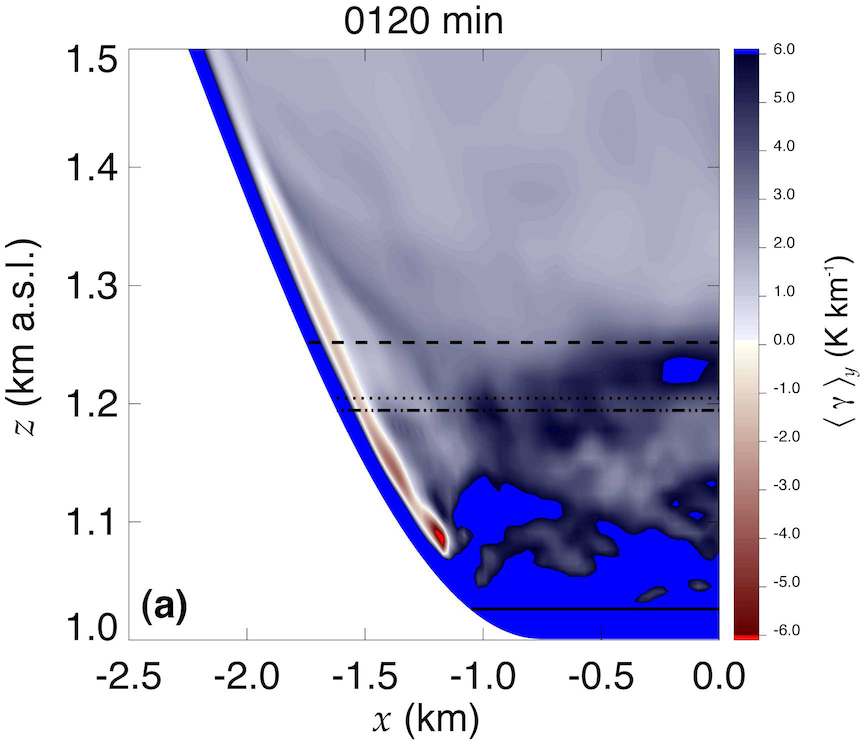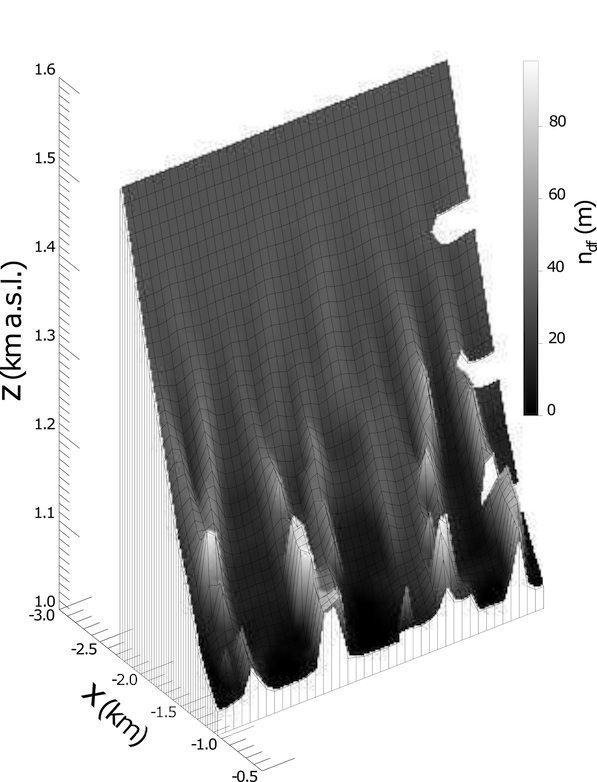Downslope flows in hills and mountains have important effects on society, the biosphere and can affect the evolution of the wider atmosphere. These flows impact the mixing of momentum, heat and tracers and their effects need to be accounted for in operational forecasting models to ensure accurate local and regional weather predictions. Since downslope flows are often subgrid scale in weather models, their effects need to be parameterised. In calm synoptic conditions, when the valley atmosphere is largely decoupled from the atmosphere above, downslope flows become a dominant feature of the nocturnal atmosphere.
My PhD project used Eulerian modelling to characterise the evolution of downslope flows and regions of
enhanced cooling in a poorly-drained valley with atmosphere decoupled from the atmosphere above.
A focus of the work was to remove the uncertainty surrounding the forcing mechanisms behind the
development of regions of enhanced cooling. The average valley-atmosphere cooling was found to be near
equally partitioned between radiative and dynamics effects. Complex interactions between the
downslope flows and the region of enhanced cooling were quantified. The impact of these interactions on
the dispersion of passive pollutants was investigated. See
![]() for project details.
for project details.
A cross-section of the valley topography implemented in the Weather Research and Forecasting (WRF) model for the study:

Downslope flows form essentially due to a net loss of longwave radiation from the ground surface to space, cooling the surface, which in turn cools the atmosphere immediately adjacent to the surface. Over sloping terrain this creates a horizontal temperature (and pressure) gradient. Conceptually, parcels of air are forced horizontally away from the ground surface, soon finding themselves amongst lighter neighbours, before being drawn downslope by Earth's gravitational field.
Below are two plots showing the simulated valley atmosphere, downslope flow and developing region of enhanced cooling:


The top plot shows contours of vertical temperature gradient, revealing an example of the density current filling up the valley with cold dense air, whilst the bottom plot shows an instance of the upper surface of the density current.